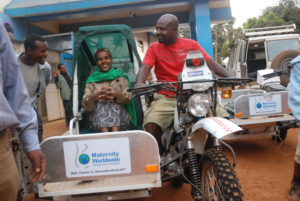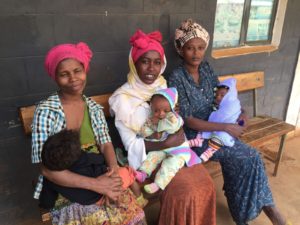 Number of maternal deaths per live births: 353 deaths per 100,000 live births
Number of maternal deaths per live births: 353 deaths per 100,000 live births
Lifetime risk of dying during pregnancy or childbirth: 1 in 64
Number of maternal deaths per year: 11,000
It is estimated that each year in Ethiopia 11,000 women and girls die in pregnancy and childbirth*
Ethiopia is where we first developed our integrated maternal health programme and has remained the inspiration for our ongoing work to save lives in pregnancy and childbirth.

This page brings together all the information about the programme and what we have achieved to date in Ethiopia. Please do click through to the highlighted headings to find out more about the different phases and elements of our work in West Wollega.
How we started
- The founding of Maternity Worldwide and our early work with Gimbie Adventist Hospital. Read more »
Our early work
- The first phase of our integrated maternal health programme 2007-2009. Read more »
Current Integrated Maternal Health Programme
- The second phase, 2010-14, extending the work to more “wored” as (villages). Read more »
Primary Care Outreach Project (PCOP)
- Setting up women’s care groups, focused ante natal care and providing e ranger motorcycle ambulances. Read more »
Safe Place of Birth
- Maternal health risk assessment project. Read more »
Independent Evaluation of Our Integrated Maternal Health Programme
- The independent evaluation of our programme carried out for the Big Lottery Fund which highlighted the very successful outcomes of the work. Read more »
Our Achievements: The Films
- This series of short films shows how our work in West Wollega has made a lasting improvement to maternal health and to the lives of the women, children, families and health professionals in the local community. Read more »

 Number of maternal deaths per live births: 353 deaths per 100,000 live births
Number of maternal deaths per live births: 353 deaths per 100,000 live births